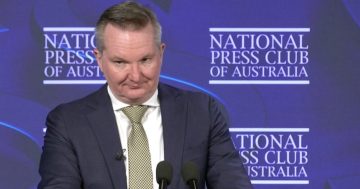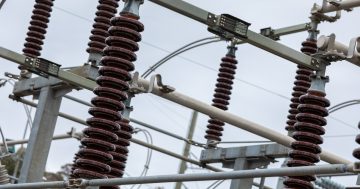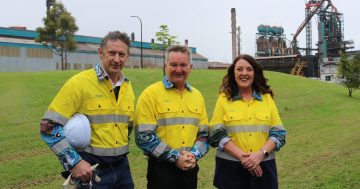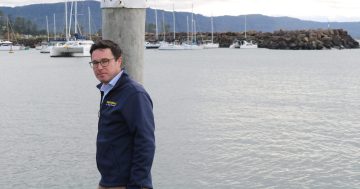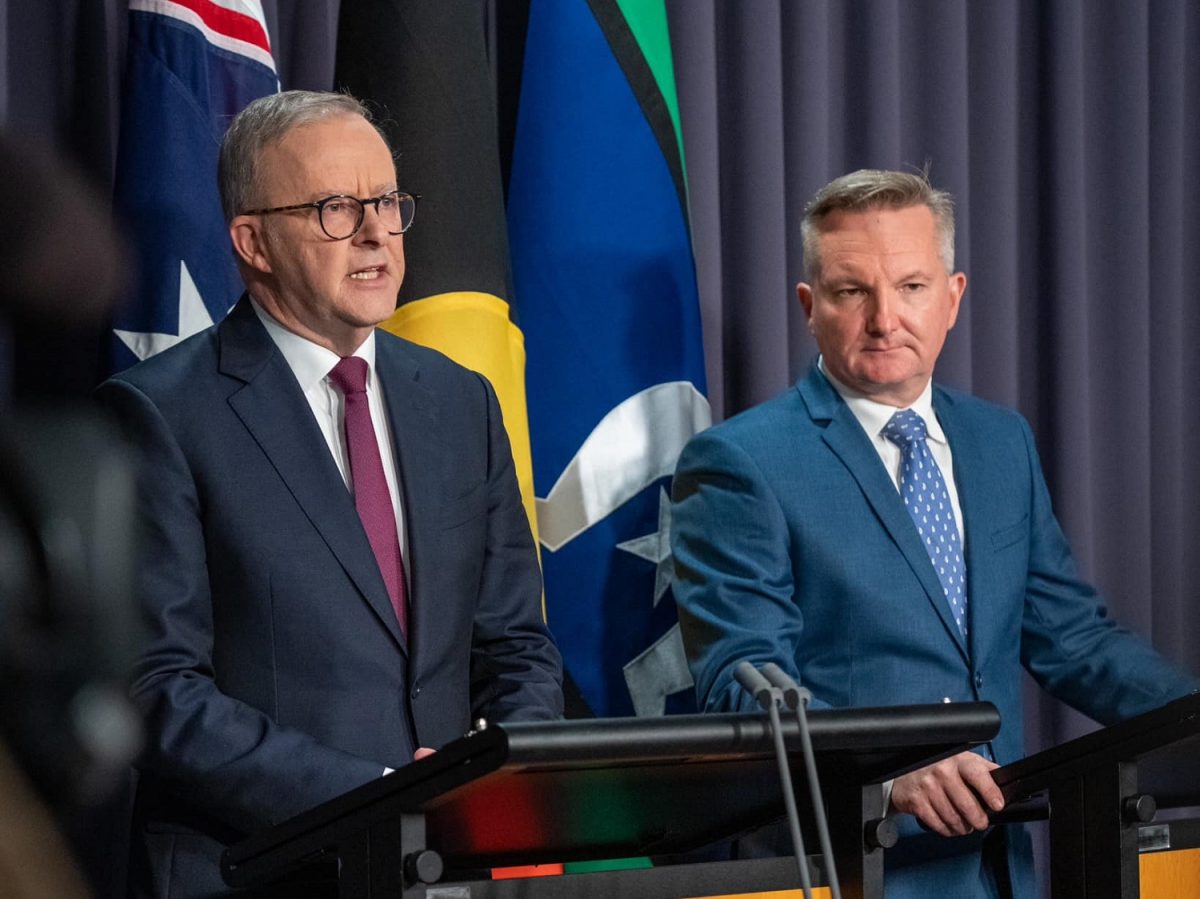
Prime Minister Anthony Albanese and Climate Change and Energy Minister Chris Bowen announcing the agreement at Parliament House on Monday. Photo: PM Facebook.
Climate Change and Energy Minister Chris Bowen announced this week that the government has secured additional parliamentary support with the Greens for the Safeguard Mechanism reforms to reduce greenhouse gases from July.
The Safeguard Mechanism was put in place under the previous Coalition government, but Mr Bowen says emissions increased by four per cent under the previous settings.
The agreement will mean the government’s goal of a 43 per cent reduction in greenhouse gasses by 2030 is achievable, as it will require the roughly 215 businesses or facilities that produce more than 100,000 tonnes of greenhouse gasses per year to keep their emissions below a baseline. This could mean an overall reduction of 205 million tonnes of emissions by the end of the decade.
“Today, we are a step closer to achieving net zero by 2050,” Mr Bowen said in a statement on 27 March. “We thank those across the Parliament who continue to approach this legislation in a constructive way to ensure accountability, transparency and integrity for the scheme, and ensure flexibility and support for industry. We will continue to work with people of good faith across the Parliament to secure passage.
“These reforms are the culmination of months of extensive feedback from Safeguard businesses, industry associations, climate and community groups, academics and private individuals,” he added.
“Business and climate groups have been clear that the Parliament should pass the strengthened legislation in front of it and deliver overdue policy certainty – but Peter Dutton would prefer to drag Australia backwards and continue the climate wars.
“These reforms are crucial to our climate and our economy – supporting Australian industry and ensuring they will continue to be competitive in a decarbonising world.”
As part of the agreement, the government says it has implemented four improvements to the reforms.
It will offer flexibility and support to industry through targeted funding for manufacturing and trade-exposed businesses through the Powering the Regions Fund, and it will provide specific treatment for hard-to-abate, value-added manufacturing.
The government says it will also address the risks of carbon leakage by commissioning a review to examine the feasibility of an Australian carbon border adjustment mechanism, and it says it will ensure accountability, transparency and integrity by making sure that the policy intent is met by ensuring the scheme delivers a proportional share of the national 2030 target.
Despite agreeing to the new Safeguard Mechanism, Greens leader Adam Bandt was less than enthusiastic when speaking to reporters at Parliament House on Monday.
“Negotiating with Labor is like negotiating with the political wing of the coal and gas corporations,” he said. “Labor seems more afraid of the coal and gas corporations than the climate collapse.”
Mr Bandt said that now that the Greens have secured a hard cap on overall emissions, he would work to prevent future coal and gas projects from being approved.
“We have stopped about half of those 116 projects from going ahead because they just won’t be able to fit in under that hard pollution cap,” he said. “But there’s more to do, because it is crystal clear that Labor wants to keep opening new coal and gas mines.
“And so, now there is going to be a fight for every new project that the government wants to open.”
During a joint press conference with Mr Bowen, Prime Minister Anthony Albanese thanked the crossbenchers who had engaged constructively with the government on the reforms, but he didn’t hold back against the Opposition.
“It says a lot about the state of the Liberal and National Parties in 2023 that, in spite of the election result, they have excluded themselves from any participation,” he said. “They’re the observers of Australian politics rather than the participants.”
Original Article published by Andrew McLaughlin on Riotact.









